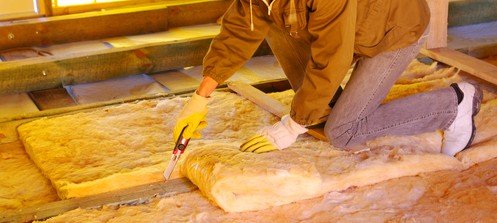Residential Energy Tax Incentives – In December 2015, the Consolidated Appropriations Act was signed into law. This bill directs how the federal government spends money. As with most federal spending bills, it covers many programs and initiatives. Among its many provisions, it extended personal tax credits for homeowners making energy efficiency improvements.
Why Tax Incentives?
Some technologies create significant benefits for society as a whole. These include everything from hybrid cars to rooftop solar panels to energy-efficient water heaters. Energy-efficient technologies often come with a premium price. The government uses limited tax incentives to encourage people to make choices that will benefit them personally as well society as a whole. Tax incentives just make it a little easier to make the right choice.
Most federal energy-efficiency tax credits for homeowners expired at the end of 2014. The good news is that they have been renewed through December 31 2016. Do you want more good news? The tax credit was renewed retroactively back to January 1, 2015. This means that any qualified energy improvement installed in 2015 or 2016 is eligible for the credit.
Program Details
Of course, there are always rules when it comes to government programs. The maximum amount of tax credit that can be claimed by a taxpayer is $500. If you claimed energy improvement tax credits totaling $500 in any previous year(s), you will have to sit this one out. In addition, this only applies to your principal residence. Rental homes, vacation homes, and other residences are ineligible. If you make it past those two hurdles, you can start looking for the best way to qualify for your tax incentive.
First, you can make improvements to your home’s envelope. The envelope includes insulation, exterior doors and windows, and roofing. These improvements will need to meet Energy Star certification requirements. A maximum credit of $200 can be claimed for windows.
Second, you can make improvements to your heating, cooling and water heating equipment. Depending on which system you choose to upgrade, incentives can range from $50 to $300. Requirements are very specific so it is important to make sure that your planned equipment upgrade qualifies for the tax credit.
How to Proceed
Before embarking on your energy efficiency journey, visit DSIRE. DSIRE is a comprehensive source of information on energy efficiency and incentive programs. Entering your zip code on the site will show you a list of federal, state, and local energy programs. The US Department of Energy funds this site so you can trust that its only purpose is providing consumer information.
Next, consult with a licensed, reputable contractor. Some of the energy efficiency upgrades may be in the do-it-yourself category. However, most of them require the services of a contractor. They are usually aware of program requirements and can assist you with making sure the improvements or upgrades qualify for the incentive programs. They can also help with providing documentation to support filing for the tax credit. Home improvement stores can also be a good source of information.
Keep in mind that claiming tax credits will involve a certain amount of paperwork. Here is an example of claiming The Solar ITC: IRS Form 5695 Instructions. Politics can change faster than the weather and there is no guarantee this program will be extended beyond December 31, 2016. Act now to take advantage of the home energy improvement tax credit.


